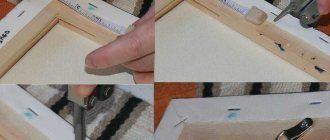Set of socks, Omsa socks
349 ₽ More details
Set of socks, Omsa socks
349 ₽ More details
Soldering stations
Food can be prepared in different ways. But the most delicious food is obtained in the oven; traditional stone structures are especially good in this regard. One of them is the Pompeian oven. It is not only compact, but also beautiful. It is not difficult to assemble it on a country plot, if you first familiarize yourself with some technical nuances, and it will look very stylish.
Basically, Pompeian stoves are installed outdoors
Device and elements
Externally, the “Italian stove” resembles a “Russian stove”, but unlike the second one, it is not capable of heating the room. The design ensures a stable and high temperature inside the stove. Usually a classic Pompeian oven is built from brick or clay, but sometimes other materials are used, most often concrete cinder block.
The design of this system consists of four components:
- Foundation;
- Tabletop;
- Pedestal;
- Bake.
The Pompeian furnace was built in order of four main components:
- Floor;
- Entrance arch;
- Dome;
- Chimney;
Construction of the Pompeian furnace
Since the history of this kitchen system is very long, it developed along two different paths, which subsequently led to the appearance of two types of Pompeii stoves: Tuscan and Neapolitan.
Photo of a Pompeian oven of two types:
Pompeian ovens of different types
Tuscan designs have a high dome and a round vault, while Neapolitan designs are made exclusively with a low vault - due to the fact that they are intended exclusively for preparing large-sized pizzas and high-quality frying.
Points to pay attention to before starting construction
Before you begin to study the step-by-step instructions, it is important that you have a clear idea of the end result. The article describes the technology for manufacturing a small portable oven for cooking pizza, which will move on a small cart. This option is ideal for those who do not have construction experience, but really want to bake pizza at home in a wood-burning oven.
How much free space do you have for your oven? Would you like to be able to move it or should it be stationary? Be sure to answer these questions before starting assembly. Ovens designed for restaurants can have a total hearth area of 1,900 to 2,700 inches. We recommend that you first measure the area where construction is planned.
Interesting! This will give you an idea of what the assembly plan and finished product will look like.
Depending on where you live, check that you won't need planning permission.
Cost: Of course, the larger the oven, the higher the cost. If this is your first time undertaking this type of construction, then using our instructions you can build a stove from reclaimed wood and recycled materials for less than $100. But if your oven is for a restaurant or commercial use, the price could rise to $10,000.
Tools and Materials: Our build plan requires a minimum set of tools and materials. If you plan to build a more substantial brick kiln, you will already need firebricks, fireclay, fireproof fabric and other materials.
A small oven will require these tools.
- Hammer.
- Nails or screws (for cart).
- Wheels/rollers (for trolley).
- Gloves.
- Bag or bucket.
- Plywood.
- A bag of cement.
- A bag of vermiculite.
- Water.
Required skills: Before starting work, you need to objectively assess your skills. With the proper patience, anyone can master the skills necessary to make such a stove. But if you do not have independent experience in making such products, then it is better to start with a simple stove design, which we describe in our instructions. If your plans are for a more ambitious project, then you should consider bringing in an experienced friend or relative who can help if problems arise.
Interesting! Despite the fact that most amateurs use this oven for baking pizza, it is also quite suitable for preparing many other dishes. You can cook almost anything in a wood-burning oven - bake bread, meat, fish and much more.
So, if you decide to build your own stove in your backyard, great! Follow our instructions carefully and get started!
Principle of operation
The heating principle inside the Pompeian system is based on two hot air flows - convective from the hearth and reflected from the ceiling.
Expert opinion
Nikolay Davydov
Stove maker with 15 years of experience
Inside the oven, the temperature is regulated without human intervention. This is done due to the physical properties of the combustion products: if the firewood flares up strongly, the gas released by the fire when exiting the system presses the incoming air flow so that the intensity of firewood combustion decreases, and therefore the temperature in this unique design is normalized.
Principle of operation
An important role in the design is played by the dome, which emits heat flows, thereby heating the surface of the food, and consequently preparing its upper layers. That is why in these systems the pizza becomes perfectly cooked.
How much will it cost?
A DIY Pompeian stove is a fairly expensive design, even if you decide to carry out all the work yourself. This is due to the high cost of the materials from which it is made. Since the design of a tandoor consists of several components, it is easiest to calculate the cost of each of them.
The price consists of purchased materials, and does not include construction waste and materials that can be found near the house (clay and sand):
- A bag of cement – 250 rubles;
- Cinder blocks will cost about 300 rubles;
- Fireclay bricks in the amount of 350 pieces will cost 17,000 rubles;
- Thermal insulation will cost 500 rubles;
- A cutting disc for stone costs about 250 rubles;
- Polyethylene for waterproofing will cost about 200 rubles.
In total, the construction of the entire structure, provided that fireclay bricks are used to lay the dome, will cost approximately 18,500 rubles .
Basic requirements for construction
There are no specific difficulties in building a Pompeian stove with your own hands; you only need to know a few basic rules for arrangement so that the structure can serve for a long time and be operated without problems:
- The inner walls of the stove must be made of refractory materials;
- It is imperative to provide the system with high-quality hydro and thermal insulation;
- The cladding must correspond to the location of the structure; if it is under a canopy, then plaster will do, but a stove located in the open air requires cladding with tiles or mosaics;
- The countertop must be able to withstand the stove, so its construction will require strong and stable materials;
- The dome of the structure must be exclusively spherical in shape;
- A chimney is required.
Materials and their quantity
A wood-burning pizza oven is built with your own hands using the following list of materials:
- 1 bag of cement
- 18 cinder blocks
- 1 pack of fireclay bricks
- Specialized fire-resistant mortar – 1 package;
- Boards if necessary;
- Insulation for thermal insulation;
- Polyethylene for waterproofing;
- Sand;
Required Tools
Each master can use his own set of tools, but usually the following list is needed to carry out all the work quickly and without much difficulty:
- Master OK;
- Kiyalo;
- Container for mixing and transferring cement mortar;
- Measuring instruments;
- Grinder and stone disc;
- Shovel for mixing the solution;
- Spatula, chisel, protractor - if necessary
Base
The base of the structure is laid with cinder blocks, the average height of which is 80 cm. When the foundation is raised above ground level, the height can be reduced. The base is laid out in the form of the letters H or P. The width of the sides is 120 cm.
Operating procedure:
- The blocks are stacked one on top of the other and fastened together with reinforcement through holes. No cement layer is required.
- The level controls the horizontal and vertical planes.
- Cement mortar is poured into the holes of the blocks. Drying time - 3 days.
Stages of work
How to make a Pompeii oven with your own hands from brick? Designing an Italian stove is quite simple - the main thing is desire and the availability of all the necessary materials. The work is carried out in 4 stages:
- Arrangement of a hearth and pedestal for a dome with an arch
- Forming a model from clay or earth
- Construction of the dome
- Dome lock installation
The whole order is clearly depicted in the diagram below:
Stages of work
Scheme and drawing
Scheme and dimensions
This figure shows the main stages of the construction of a pompeii, and also indicates all the dimensions of the parts of the Italian stove. The pizza oven, the drawing of which is shown above, does not require many skills to build - the main thing is to select the right materials.
Foundation
The structure definitely needs a high-quality foundation; a reinforced concrete slab with a thickness of 15-20 centimeters is ideal for this role. For proper waterproofing, you can use a two-layer roofing felt. The foundation plays a fairly important role - it ensures the stable condition of the entire structure and allows you to install very heavy structures on it, in this case it is a Pompeian brick oven, which has enormous weight.
The foundation can be made according to this scheme
Cinder block pedestal
You need to install a pedestal on the base, on which the stove itself will be installed. A pedestal for a pompeii is also called a table. You can lay it out of brick, but it is easier and faster to build it from ordinary concrete cinder blocks - they are cheaper than other materials and have good stability compared to other materials.
You need to build the base using regular masonry, as in the photo below:
Construction of the foundation
Three walls will allow the tabletop to remain stable, and inside the resulting opening you can stack dishes or firewood; this part of the pompeii will serve as a mini-warehouse. After the three walls are folded, the tabletop is installed on them.
Tabletop
As a countertop, you can use a concrete or calcium silicate slab. Some people purchase marble slabs, and the pedestal is made of natural stone. Residents of the Krasnodar region used slabs from dismantled dolmens for Pompeii ovens whenever possible.
Example of making a countertop
Furnace laying
The construction of the Pompeii furnace itself is the most important part of the work. It begins with laying a hearth made of fireclay refractory bricks. The bottom is the name given to the lower part of the stove, which is the bottom where the wood will burn while the pompeii is running, so it should be laid out beautifully and as compactly as possible. The most suitable herringbone styling:
This option is most preferable
As you can see in the photo above, in addition to the hearth itself, you need to lay out the side of the entire structure and the pedestal for constructing the arch from fireclay bricks.
After this, you need to decide how the dome model will be made, on top of which the masonry will be made. The model can be a hemisphere made of earth or clay soil, formwork made of cardboard or wood, or a radial model made of wooden plates. The easiest way to make a model is from clay or earth:
Layouts on which you can make masonry
After the dome model is made, masonry can begin. Since it will be the inner layer of the entire structure, you should use only refractory fireclay bricks that can withstand extreme temperatures. Some owners decide to use a hinged support instead of a model; this simplifies the laying process, but increases the duration of all work:
Another masonry method
Continuation of masonry
When laying a brick dome, it is necessary to maintain its spherical shape, since it is the basis for good heating inside the Pompeian oven. For convenience, you can use refractory brick halves, which should be prepared in advance by cutting with a grinder and a stone disc. Follow safety precautions when cutting bricks:
- Use a mask, it can be purchased at a pharmacy;
- Be sure to wear safety glasses and gloves;
- Brick should only be cut with a stone disc;
- The cutting process takes place in the “pull” mode so that the brick does not jump out from under the disk.
Make sure the dome is made correctly
In order to correctly install the Pompeii stove with your own hands, keep the drawings and dimensions close to you during the work. Lay alternate rows of domes around the sphere, finishing each row of masonry before starting the next. In each subsequent row there will be 1.5 fewer bricks, so before you make a Pompeian stove with your own hands, be sure to keep blanks of 0.3-0.7 bricks on hand.
Completion of the dome masonry
Front view
Construction of a chimney
The chimney is laid out over the hole that was prepared during the construction of the structure. So the temperature inside it will be low; it can be made from ordinary brick masonry. The beginning of the work should be the installation of the arch:
Place for chimney
When building a Pompeian stove, some install a chimney made of galvanized steel. It doesn’t look so beautiful, but there is no need for work on its construction and you can save a lot on bricks.
Metal chimney
Thermal insulation of the furnace
On top of the masonry made of refractory bricks, a clay coating is made, on which thermal insulation 5-10 centimeters thick is laid on top. Mineral or basalt wool will serve best in this role.
Thermal insulation of the furnace
Next comes a layer of cement-sand or cement-lime plaster. After the thermal insulation has been completed, facing work can be carried out.
Furnace lining
When all the work on constructing the dome, installing thermal insulation and plastering has been completed, it is possible to carry out facing work that will make the stove visually attractive and consistent with the design conditions of the backyard.
Expert opinion
Nikolay Davydov
Stove maker with 15 years of experience
The type of cladding is largely determined by the location of the structure. If the system is installed outdoors, it is best to cladding it with mosaic or clay, or a high-quality cement-sand mixture.
Drying
After constructing the structure, it needs to be allowed to dry; the solution usually dries within 3-4 days, after which the first kindling can be done, which becomes the final stage of the work.
First kindling
After the entire structure has been erected, the first firing of the Pompeii furnace is necessary, which will serve as a strengthening process for it. Experts recommend heating the structure daily for a week to strengthen all layers. This is done in the following order:
- In the first fire, you need to fuse 2 kilograms of paper or 3 kilograms of straw inside the combustion chamber;
- In the second firebox, 3 kilograms of straw and 1 kilogram of wooden chips and sticks are burned;
- In the third firebox you can burn 4 kilograms of wood chips;
- The fourth fire allows you to burn one dry log;
- In each subsequent fire, the number of logs burned increases by one;
If the first kindling is carried out incorrectly, the entire structure may dry out and crumble, which will lead to the destruction of the structure.
Design diagram
- Foundation.
- Pedestal.
- Tabletop.
- Entrance arch.
- Under.
- Dome.
- Smoke exhaust.
How to make a small fireplace with your own hands, step-by-step instructions
Photo 1. Detailed diagram of the Pompeian pizza oven with explanations and dimensions.
When laying the foundation, it should be taken into account that the furnace will weigh at least 700 kg. The base must be strong and level to ensure the durability of the entire structure.
The stove pedestal is a continuation of the foundation and raises the structure itself to a height of about 1 m.
The tabletop is a working area. It is placed on a pedestal and formed under the (bottom) of the oven chamber. The tray must be perfectly level, since the pizza is baked directly on it without any equipment.
Important! The hearth material must be safe in composition for cooking. An entrance arch and a stove dome are formed around the bottom in compliance with the proportions of the specific scheme
A rectangular hole is left at the top of the ceiling to connect the chimney
An entrance arch and a furnace dome are formed around the bottom in compliance with the proportions of the specific scheme. A rectangular hole is left at the top of the ceiling to connect the chimney.
Materials for building Italian stoves
The construction chamber is made of fireclay bricks. You can also take fireproof stone. Fireclay sand and clay are used for mortar; cement mixtures are not suitable.
Attention! To form the dome and hearth, the use of ordinary bricks is not allowed. Otherwise, the chamber will crack and the masonry will begin to collapse
The foundation is a reinforced concrete slab laid on a bed of sand and crushed stone.
To build a pedestal on the foundation, ordinary clay bricks or silicate blocks can be used. As a rule, the pedestal has a niche for storing firewood or dishes.
The countertop can also be made of brick and stone, but it is better if it is monolithic. To do this, use a ready-made slab or pour a mortar reinforced with reinforcement into the formwork yourself. The recommended tabletop thickness is 100 mm.
A layer of hydro- and thermal insulation is required between the bottom of the stove and its countertop to avoid heat loss and destruction. Separation is carried out using a calcium silicate pad, expanded clay filler or perlite sand.
The outer part of the oven also requires insulation, which consists of several layers:
- Heat-resistant plaster over brickwork.
- Basalt mineral wool.
- Decorative moisture-resistant finishing with a special mixture, stone, tile.
The chimney of a pizza oven is made of brick, metal, asbestos in the form of a pipe or box.
When constructing a furnace vault, hinged and radial spherical templates made of plywood, lumber and metal parts are used. Without stencils, the dome will not turn out semicircular.
Important! If the stove is planned to be installed outdoors, a canopy is required to protect the structure from precipitation
Option made from clay (without brick)
Making a Pompeii oven from clay, without using bricks, is a simple process. The foundation and tabletop are made in the same way as in the case of the classical design, but the model is made from coarse sand (screenings). A clay dome is laid on top of it.
Pompeii made of clay
Device
It is best to use special clay; you can purchase it at a construction warehouse. How to properly make an Italian design from clay is well shown in this video:
A Pompeii clay oven is installed with your own hands in the same order as when constructed from other materials. After the dome is installed, a chimney is made - any materials can be used for its construction, including ordinary brick.
Expert opinion
Nikolay Davydov
Stove maker with 15 years of experience
As in the case of a brick Pompeian stove, waterproofing and thermal insulation are required, which will ensure a long service life, as well as cladding, which will protect the structure from irritating factors (rain, hail, snow).
The Pompeii clay pizza oven is a simple design to construct - anyone can make one like this.
Characteristics
Examples of design of a Pompeian oven
A distinctive feature is that the Pompeian oven has a vaulted, bell-shaped design. Its arch resembles a hemisphere. Due to this, heat is evenly distributed with low losses and the necessary draft is provided. The chimney pipe is separated from the firebox and is located next to the entrance area.
The entrance should be 50-60% of the height of the dome. The width of the furnace mouth almost corresponds to the height of the dome. This proportion minimizes heat loss and ensures good traction.
In Italian pizzerias, the fire in the firebox is maintained for several months, and the temperature is raised before cooking. In just 1 hour the temperature reaches 370°C. The heating range ranges from 70ºC to 400ºC. The building allows you to make a Tuscan grill. It is enough to move the coals to the mouth and install a special grate on legs.
What can you cook?
Despite the fact that in these Pompeian buildings they cook mainly only pizza, which is truly tasty, because it will be prepared according to traditional technologies, many other dishes can be cooked in the Pompeian oven:
- Baked fish - usually served with baked potatoes or lemon, thanks to double-sided baking, the fish turns out tender, rich in flavor, melting in your mouth;
- Baked meats - many meat dishes are cooked to perfection in the Pompeian wood-burning oven, including kebabs and grilling, and lamb is cooked nowhere better than in the Pompeian system;
- Baked apples are a very tasty national dish, which is especially tasty in the tandoor; you can also prepare other hot desserts;
- Homemade bread and various buns - Italian wood-burning ovens allow you to prepare very tasty bakery products of various categories: Tuscan bread,
- Dishes baked in clay pots are a different story, because the temperature inside this oven is ideal for preparing various dishes baked in clay pots: beans, potatoes, fondue, vegetables, cabbage soup, mushrooms;
- Cantucci, buns, cookies, pies - baked goods for tea are excellent in Pompeika;
But every owner knows why he builds this unique structure - to prepare pizza and lasagna with an amazing range of flavors. These Italian dishes have long been prepared in Italian wood-fired ovens, so in order to get the highest quality pizza, no matter what ingredients it is made with, it should be cooked in a Pompeian oven.
More about mini ovens
The author of the article was once invited to a pizza picnic. But, as it turned out, there was no trace of a special oven there. The hostess and her friends were completely sure that the pizza was fried over coals in a frying pan. What should I do?
Among the dishes there were 3 glazed clay dishes, two identical large ones and one smaller one. I had to think twice and even point my finger at the calculator to determine when the pizza would arrive. Then the workpiece was placed on a smaller dish, it was placed in a larger one and covered with another. Meanwhile, the fire had burned down to coals, they were cleared away, a makeshift stove was placed on the fire and covered with coals.
Pizza pot oven
After the calculated time had elapsed (heating inside from 300 to 400 degrees for 5-6 minutes), the pizza was removed and eaten. It turned out so-so, it took a long time to warm up to 300 degrees. But it turned out to be a revelation for the ladies; they weren’t even offended and took note.
And after some time, the “inventor” was surprised to learn from them that a similar mini-pizza oven, it turns out, had been mass-produced by Earthfire in South Africa for a long time, see fig. It costs a lot on sale, about 2000 rubles, and requires fairly high culinary skills. However, it is completely energy independent and will come in very handy at a picnic with pizza.
Conclusion
In order to delight your household and your guests with delicious pizza, as well as pleasant gatherings near a warm fire, every enterprising owner can build a Pompeii pizza oven in his own garden with his own hands. This structure can be made of brick, and if you want to save money, it can be built from clay material. The main thing is that the entire system is manufactured in accordance with technology and basic rules.
What kind of Pompeian stove will you make?
From brick From clay











